In crafting your public relations resume, you understand the importance of a well-pitched message. Just as in your profession, your resume needs to strike the right chords to land you that job. It's your opportunity to show you can deliver results.
The public relations industry is all about one-page resumes. In the end, PR professionals should be able to provide all important information in a clear and concise way.
To make sure your public relations resume is flawless, follow our tips and learn about:
- Formatting your public relations resume
- Crafting a public relations resume summary
- Selecting the right skills for your public relations resume
- Putting work experience and key projects on your PR resume
- Listing your education on a public relations resume
- Including extra sections in your PR resume
- Average salary and outlook for public relation specialists
- Useful job search resources for public relations professionals
1. How to properly format your public relations resume
Your resume's format can set the stage for the entire document and significantly contribute to the first impression you make on a potential employer. Here are the three primary methods you can use to organize your PR resume:
- Reverse chronological format: As the most commonly used and traditional choice, this format has you list your experiences (work or education) starting with the most recent and working backwards. This allows employers to easily see your career progression and current skills.
- Functional format: If you're changing careers or have gaps in your work history, this could be the format for you. Rather than focusing on when you gained certain experiences, the functional format emphasizes the specific skills you have.
- Hybrid format: If you have a lot of relevant skills and experiences, or if you're applying to a senior role, consider this option. It blends the other two formats, allowing you to highlight both your skills and your work history.
Regardless of the format you choose, ensure it's easy to read, sticks to a professional font, uses consistent bullet points for listing details, and is properly spaced. A well-formatted resume is clean, professional, and places your most impressive and relevant qualifications front and center.
Select the format that best presents your track record and capabilities and remember — consistency is key!
2. How to craft a public relations resume summary
As a PR person, you’ve probably written dozens of press releases. Therefore, you know how important it's to catch the attention of the reader from the get-go.
And the best possible way to catch the attention of a hiring manager is to start your resume with a great resume summary.
It's a brief 3-4 sentence snapshot of your experiences, skills, and achievements. This section should contain a mix of your PR-specific skills, a notable accomplishment, and a hint of your personality.
Let's have a look at two examples.
Incorrect PR resume summary example
Experienced in creating and executing PR campaigns, team management, and stakeholder communication.
Why is it incorrect? While it does list a few PR-specific tasks, it's vague. It doesn't specify what kinds of PR campaigns were executed or how the experience influenced the results.
Correct PR resume summary example
Performance-driven Public Relations Specialist with 7 years of experience in crafting and executing successful PR campaigns for tech startups. Led a team of 4, achieving a 35% increase in media coverage and a 20% bump in brand recognition. Known for crisis management and ability to bring brands back into a positive light.
Why is it correct? It's specific and results-focused. It clearly states the industries the candidate has experience in (tech startups), the achievement (increase in media coverage & brand recognition), and it highlights a unique PR skill (crisis management). It creates a clear picture of the candidate's experience and skills.
Your summary is your first impression — make sure it counts!
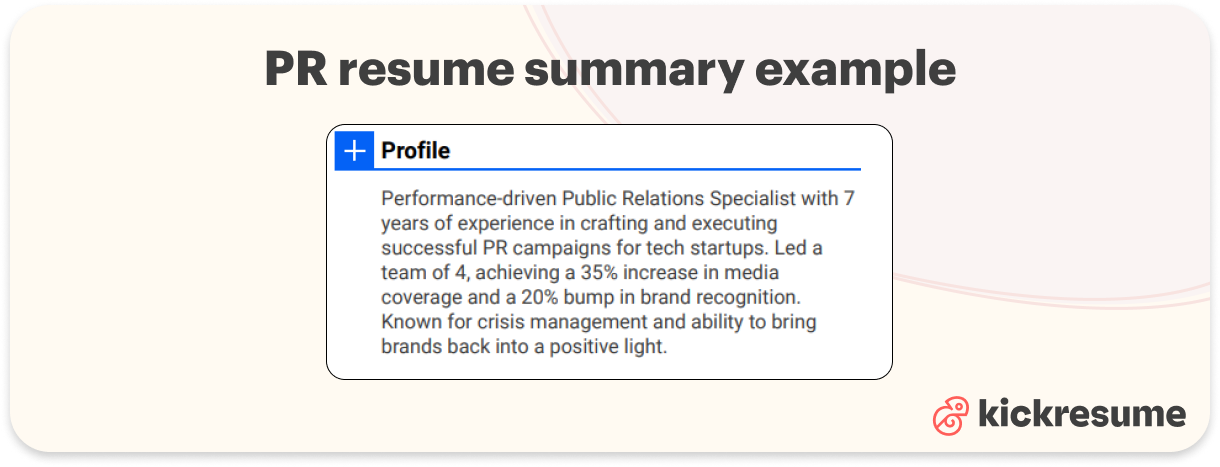
3. How to select the right skills for your public relations resume
Skills determination can often make or break your resume. The trick is to include a careful mix of job-specific hard skills and transferable soft skills.
Hard skills are the specific, measurable abilities you've learned over time. These are usually acquired through professional experience, training, or education. They're essential because they're the practical skills you need to perform job-specific tasks in public relations.
In a PR role, you'll be expected to showcase a variety of hard skills, each one adding a unique dimension to your capability as a PR expert.
Here are some important hard skills for your PR resume
- Media relations
- Content creation
- Crisis management
- SEO/SEM campaigns
- Social media management
- Event coordination
- Press release writing
- Data analysis
Contrary to hard skills, soft skills are more about your personal traits and how effectively you interact with others. They're important because, in PR, you're often managing relationships and working with teams — two tasks that require exceptional people skills.
While they can be harder to quantify, they're no less valuable and can often be the deciding factor for a hiring manager.
Here are effective soft skills for your PR resume
- Excellent verbal communication
- Problem-solving
- Analytical thinking
- Time management
- Ability to work under pressure
When highlighting these skills, remember to lead with the ones that are specifically requested in the job ad. PR-related resume keywords are crucial if you want to show both the recruiter and the ATS that you're the right fit for the job — they will both scan your resume content for such keywords.
Also, don't just list them — provide solid examples under your work experience section that validate these skills. Show the potential employer that you don't just have these skills, but know how to use them to drive results.
4. How put work experience and key projects on your PR resume
One of the most crucial sections of your resume is your work experience. Here you get to demonstrate your practical PR experience and how you've applied your skills to great effect.
This section adds substantial credibility to your resume, allowing you to showcase your capabilities and expertise through concrete evidence.
However, it's not as simple as merely listing all your past roles and responsibilities. Every job, project, or campaign you've worked on paints a unique picture of your abilities. Hence, it’s crucial to select the right experiences to highlight, and present them in a compelling manner.
Equally important is showcasing key projects you've handled. Key projects can act as a mini portfolio inside your resume. They provide deeper insights into your capabilities as they underline your problem-solving abilities, strategic thinking, and ability to meet objectives. And remember, the projects you choose must align with the needs of the potential employer.
Incorrect work experience and projects section example
Public Relations Specialist
ABC Company, 2015-2018*
- Handled PR campaigns
- Managed crises
- Coordinated Events
- Wrote press releases
Key project
- Executed a product launch campaign.
Why is it incorrect? The listed responsibilities are unspecific, and it's unclear how the candidate's actions impacted the company. Also, the key project mentioned doesn't provide any detail about the campaign's goal, execution, or result.
Correct work experience and key projects section on a PR resume
Public Relations Specialist
ABC Company, 2015-2018
- Spearheaded a PR campaign promoting a new product line, resulting in a 15% sales increase in Q1 2017.
- Managed a public image crisis using strategic communication leading to a 20% improvement in brand perception within 3 months.
- Coordinated 5 corporate events with over 2,000 participants, contributing to a 10% increase in new business leads.
- Wrote and distributed 25+ press releases, 65% of which were picked up by top-10 industry-leading outlets.
Key project
- Led a social media campaign for a product launch that boosted engagement by 40%, increased followers by 30%, and contributed to a record-breaking sales quarter.
Why is it correct? Each bullet point is specific and outlines the candidate's impact on the company. The key project explained demonstrates the candidate's ability to manage, execute, and reap positive results from a large-scale project.
The difference between these examples lies in detail and impact. Employers aren't just interested in what you did — they want to know how well you did it. So, when you're writing about your work experience and projects, don’t just list your tasks, display the value you added.
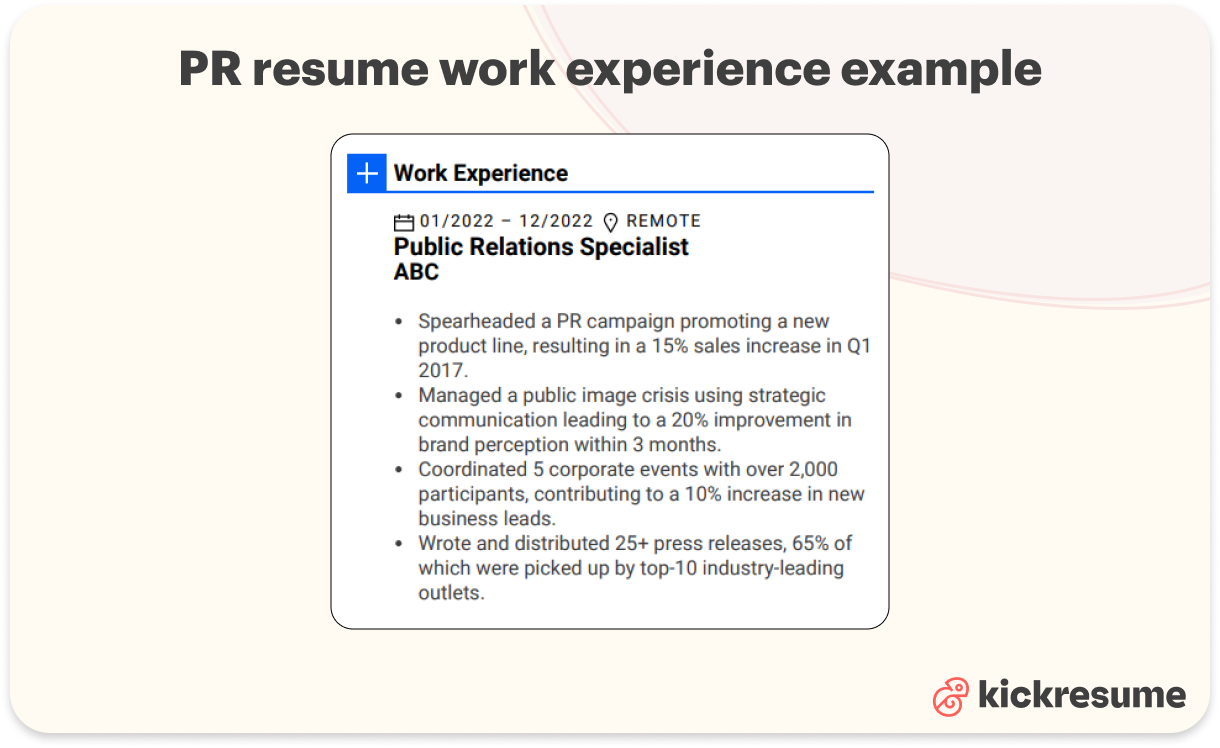
5. How to list your education on a public relations resume
An education section is a crucial component of your resume. Whether you recently graduated or have been working for some time, it's vital to outline your educational background. If you've studied something unrelated to public relations, don't worry — you can still highlight transferable skills and achievements.
If your degree isn’t centered around PR, think about relevant coursework or projects you’ve done that could transfer over. It could be a project where you had to manage a group's communication or a class where you spent time analyzing mass media.
Incorrect way to list unrelated education on your PR resume
BSc in Biology, XYZ University
Why is it wrong? It merely states a degree in an unrelated field without leveraging any transferable skills or relevant achievements.
Correct way to list unrelated education on your PR resume
BSc in Biology, XYZ University, 2015-2019
- Completed a successful group project utilizing strong communication and presentation skills.
- Coursework included: Media Studies and Business Communication.
Why is it right? Despite the unrelated degree, this listing draws attention to relevant coursework and highlights transferable skills from a group project.
If your degree isn't in PR or a related field, emphasizing transferable skills, relevant coursework, or academic achievements can illustrate your potential as a PR professional. Remember, your resume should tell a story that underscores your capabilities and makes it clear you'd be an asset in any PR role.
6. What extra sections to include in your PR resume
Extra sections are the cherry on top of your resume sundae. They can add depth to your professional identity, give you an edge over other candidates, and allow you to showcase your personality and additional skills.
Here's what you can consider as a PR professional:
- PR certifications: If you've completed any PR-specific courses or certifications, be sure to list them. They add credibility to your skills and show continuous learning.
- Professional associations: If you're a member of organizations like the Public Relations Society of America (PRSA) or the International Public Relations Association (IPRA), be sure to mention that. It indicates you're engaged with the industry beyond your day-to-day work.
- Publications/Portfolio: If you've had your work published or have a portfolio, add this section to your resume. It's instant proof of your skills.
- Volunteer activities: Volunteering demonstrates a commitment to community and can also demonstrate your PR capabilities, especially if you dealt with promotion or event organization.
- Languages: Knowing more than one language is an often underrated skill in PR. It can be a significant advantage in working with international clients or audiences.
- Awards and accolades: If you've been recognized for your work or achievements, it's proof of your expertise in your field.
Here’s an example of how to list extra sections on your PR resume
Publications
- "The Role of PR in Crisis Management," PR Review, March 2021
- "Leveraging Social Media for Effective Public Relations," OnlineMarketingJournal, June 2020
PR certifications
- Certified Public Relations Specialist (CPRS), Public Relations Society of America, 2019*
Volunteer activities
- Volunteer PR Coordinator, Local Animal Shelter, 2018-Present
- Managed a digital PR campaign for annual fundraising, which raised an excess of planned budget by 20% in 2020.
Remember, the goal of including extra sections on your resume is to round out your professional profile and give employers a more comprehensive vision of who you are, not just as an employee, but as a person. Choose the sections that show off your unique strengths and abilities that contribute to your effectiveness as a PR professional.
7. Average salary and outlook for public relation specialists
In considering a career, it's essential to know the financial and professional growth potential. Here's the latest data from the Bureau of Labor Statistics (BLS) as of May 2022.
The average annual salary for PR specialists stands at $67,440. However, remember that salaries greatly depend on your experience, location, and the size of the organization you work for.
As for the future of PR careers, the industry shows robust potential. Employment of public relations specialists is projected to grow 6 percent from 2022 to 2032, which is faster than the average for all occupations.
Furthermore, there is a substantial number of job openings projected in the coming years. The BLS estimates about 25,800 openings for public relations specialists each year, on average, over the decade.
The increased use of social media for product and service promotion seems to be one of the key drivers of this growth. This provides a promising outlook for aspiring PR specialists, proving that this career carries strong wage and employment prospects.
Just remember, a well-crafted PR resume plays a critical role in landing these opportunities — so make yours count!
8. Job search resources for PR professionals
In the vibrant world of PR, knowing where to find the right opportunities is half the battle. Luckily, there are numerous resources designed to guide PR professionals on their path to career success. Here's your handy toolbox:
- PR job boards: These can be treasure chests for job seekers! Websites such as PRSA Jobcenter or Mediabistro specialize in PR job listings across levels and varied industries.
- General job platforms: Widely recognized platforms like Indeed, LinkedIn, and Glassdoor are also replete with PR job postings. Make the most of the search filters these sites offer to find your perfect fit.
- Networking platforms: For PR pros, networking isn't just a job hunt strategy, it's a lifelong habit. Create strong profiles on platforms like LinkedIn to showcase your work and connect with other industry professionals.
- Industry blogs and podcasts: Resources like 'Spin Sucks' blog or 'The PR Week' podcast offer rich insights into industry trends and often feature job opportunities. These are also great sources to pick up practical tips and tricks of the PR world.
- PR associations: Associations like Public Relations Society of America (PRSA) or the International Public Relations Association (IPRA) provide members with job boards, networking events, resources, and industry updates — a must for any PR professional.
- PR-specific recruitment agencies: Agencies such as The Works or Gemini Personnel specialize in PR staffing and can help connect you with job openings tailored to your skills and interests.
- Company career pages: Don't forget to regularly visit the career pages of PR agencies or industry-specific companies that you'd like to work for. Many businesses list openings here before publicizing them elsewhere.
With the right resources and a go-getter mindset, you'll be all set to conquer the dynamic PR job market!
Public Relations (PR) Resume FAQ
Should I include a 'References' section on my PR resume?
You don’t need to include a 'References' section on your resume. Most employers won't ask for this information until later in the hiring process. It's better to use that space to showcase more of your skills and experiences.
What if I don't have any PR work experience?
If you’re new to the PR field, focus on the skills and experiences you do have. Highlight relevant coursework, internships, school projects, or voluntary activities where you used or developed PR-related skills. Remember, transferable skills like communication, organization, and creativity are highly valued in PR roles.
Should I include a ‘Hobbies’ section on my PR resume?
Only include a 'Hobbies' section if you feel your hobbies relate to the job or showcase your skills. For example, if you enjoy writing and maintain a personal blog, that’s worth mentioning as it showcases your content creation skills.
Do I need a different resume for each PR job I apply for?
Yes, you should tailor your resume for each job application. Different companies and roles prioritize different skills. Make sure you highlight relevant skills and experiences for each specific job.
How can I make my PR resume stand out?
There are several ways to make your PR resume shine. Be sure to include quantified achievements in your work and project experiences, incorporate relevant extra sections, and skillfully craft your resume summary. A well formatted, easy-to-read, and professionally written resume can make a lasting impression.

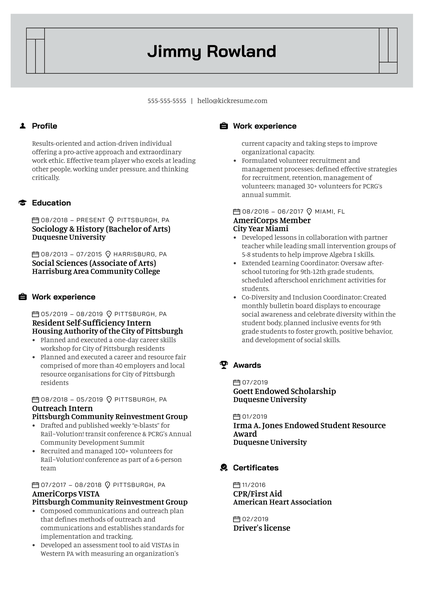
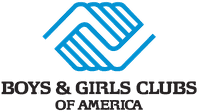
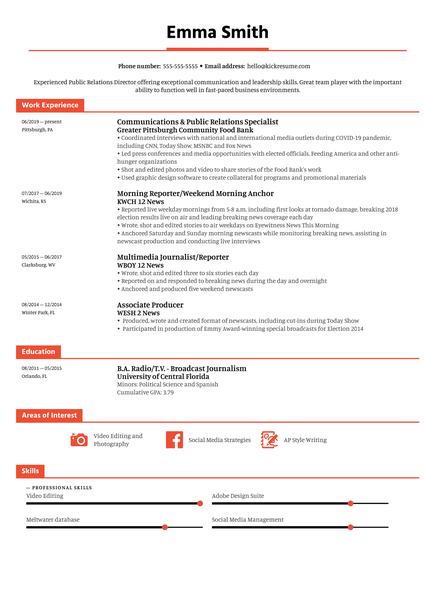
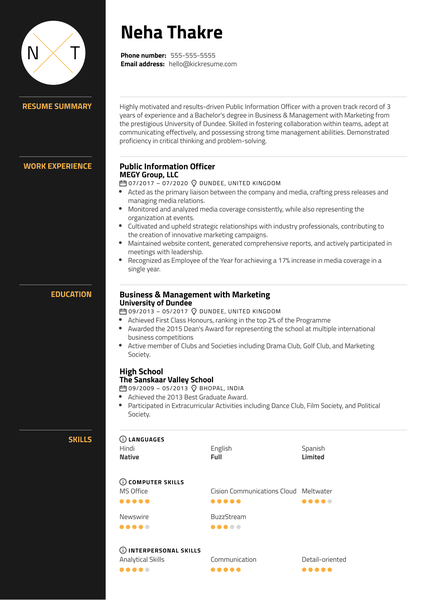
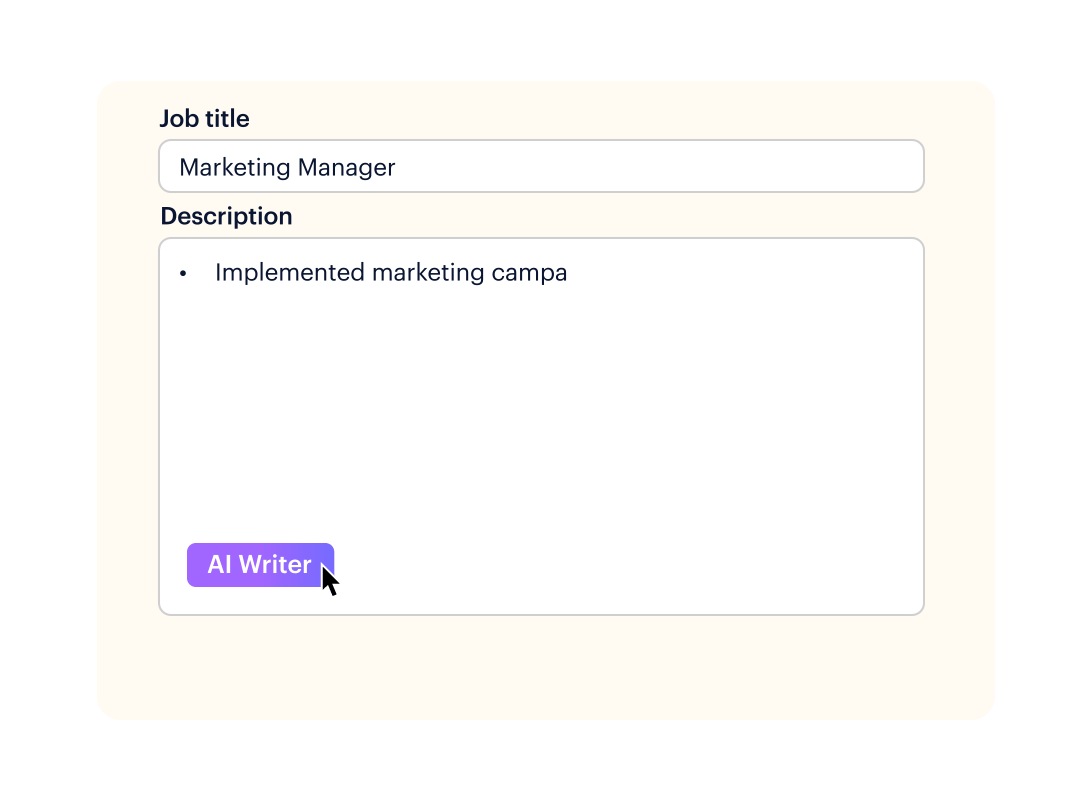


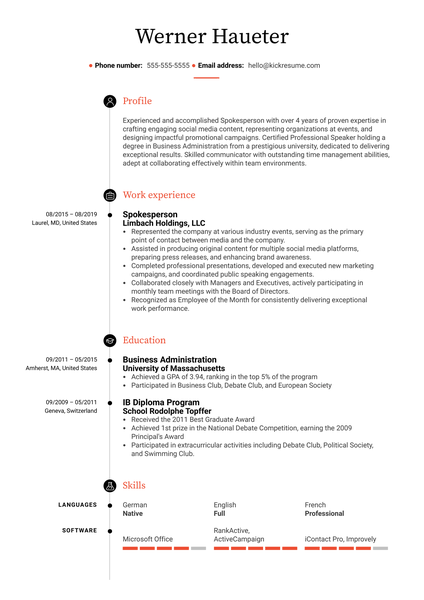
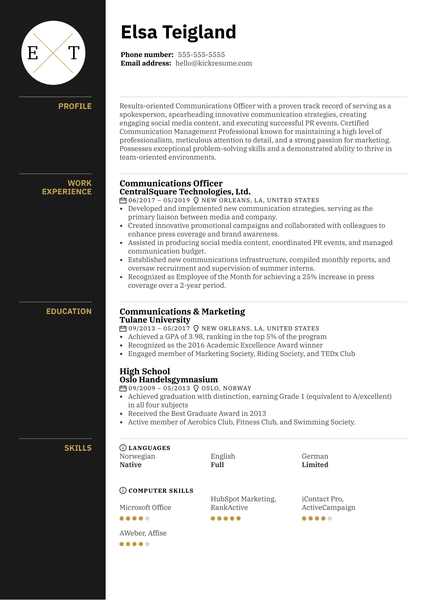
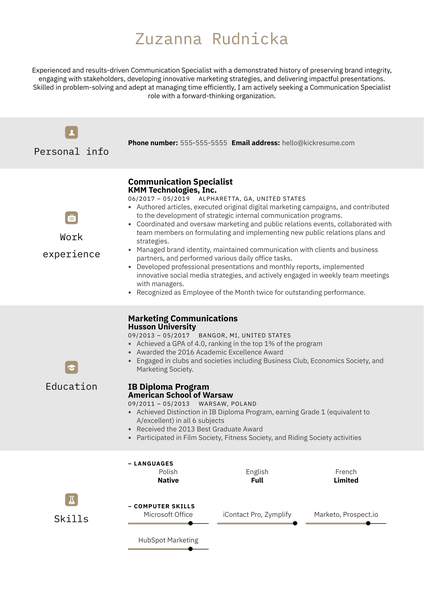
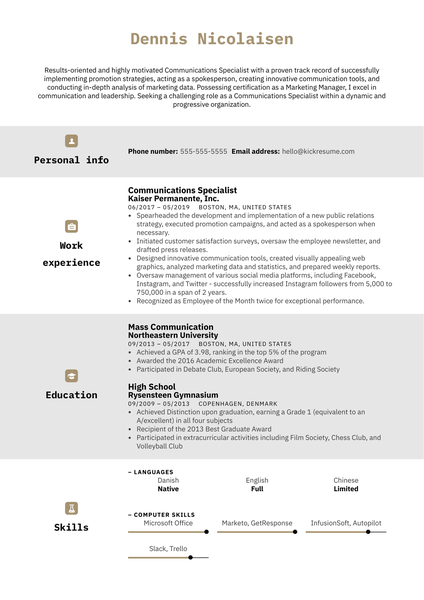
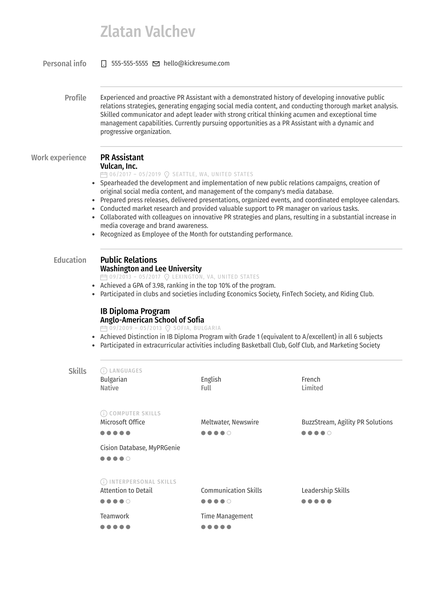
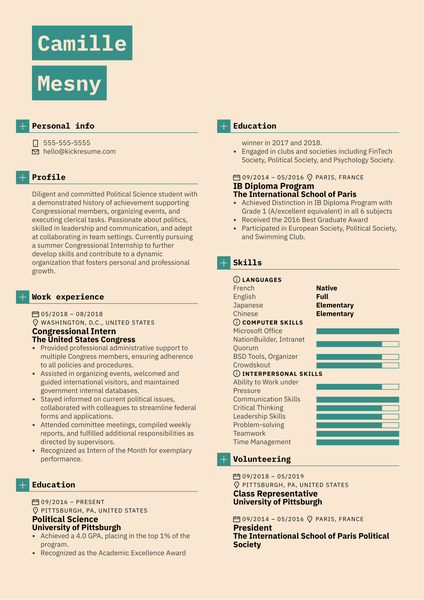

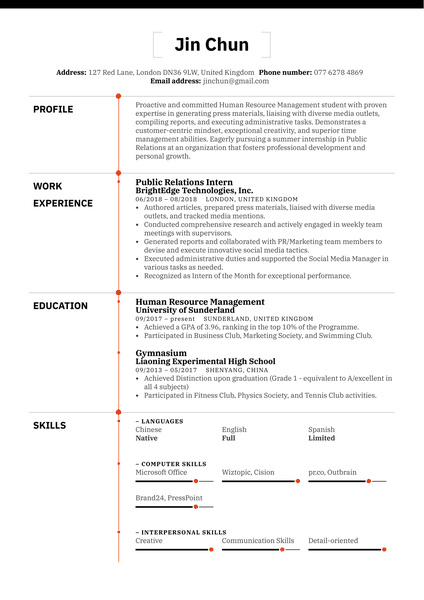
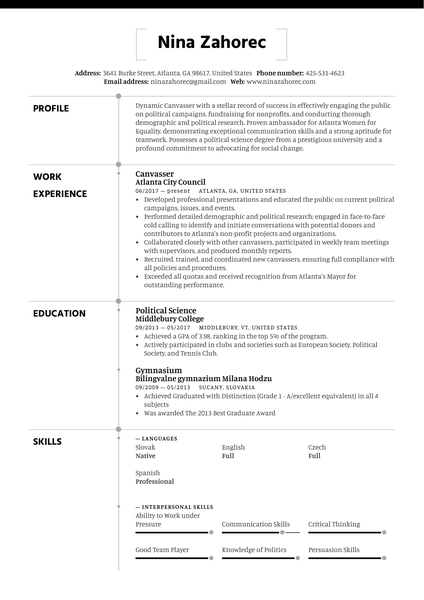
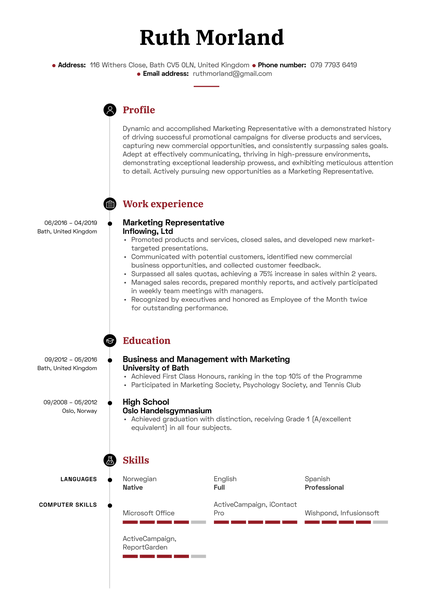



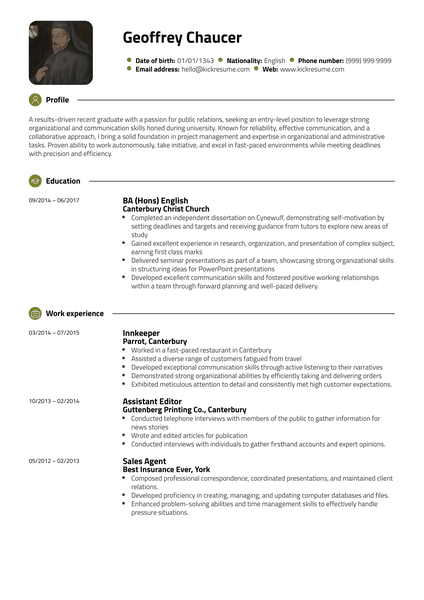
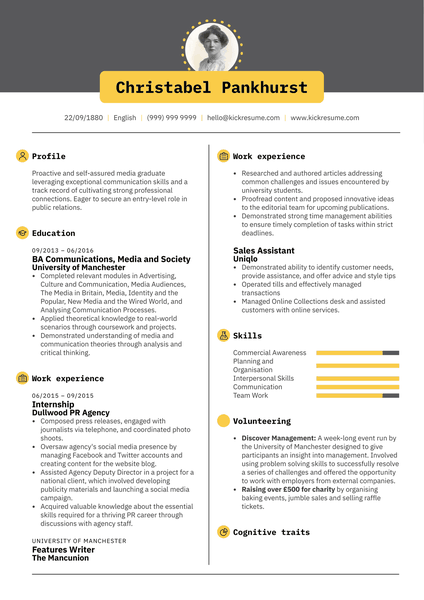

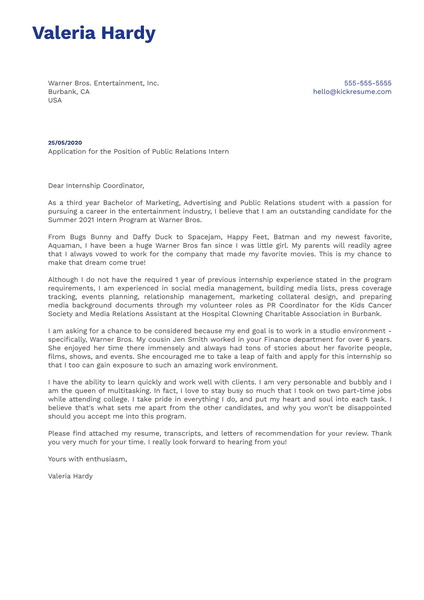
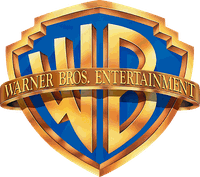


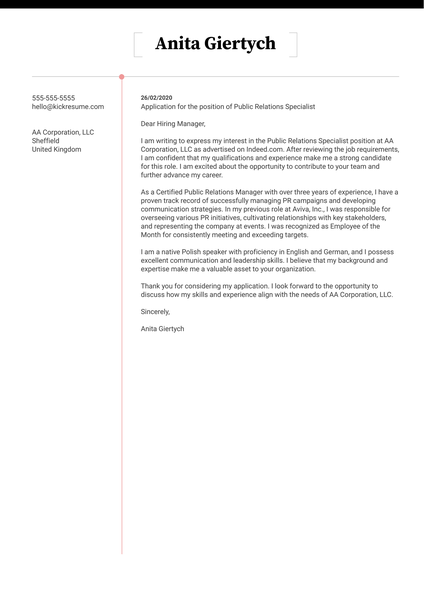
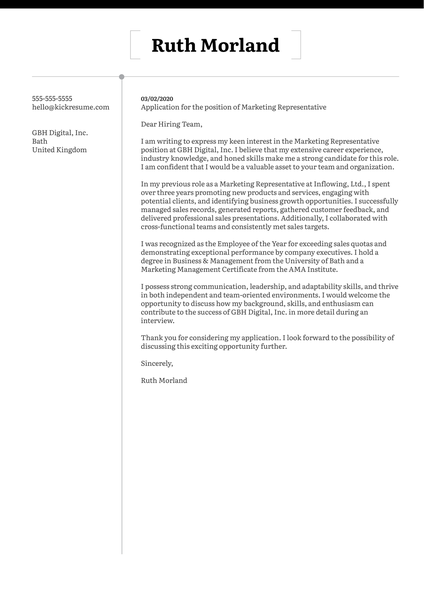
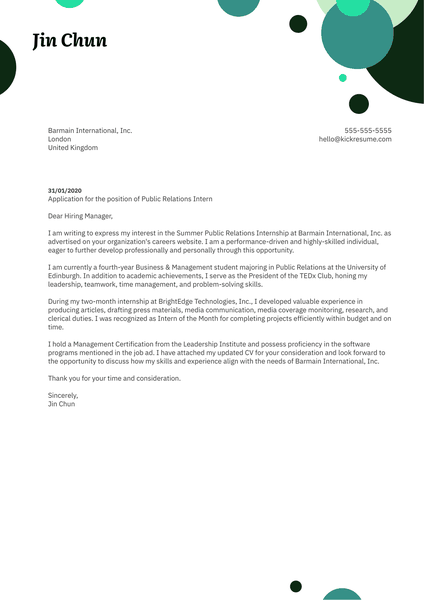

![How to Write a Professional Resume Summary? [+Examples]](https://d2xe0iugdha6pz.cloudfront.net/article-small-images/i-Profile.svg)
![How to Put Your Education on a Resume? [+Examples]](https://d2xe0iugdha6pz.cloudfront.net/article-small-images/i-Collage-Universities.svg)
![How to Describe Your Work Experience on a Resume? [+Examples]](https://d2xe0iugdha6pz.cloudfront.net/article-small-images/Experience.svg)


